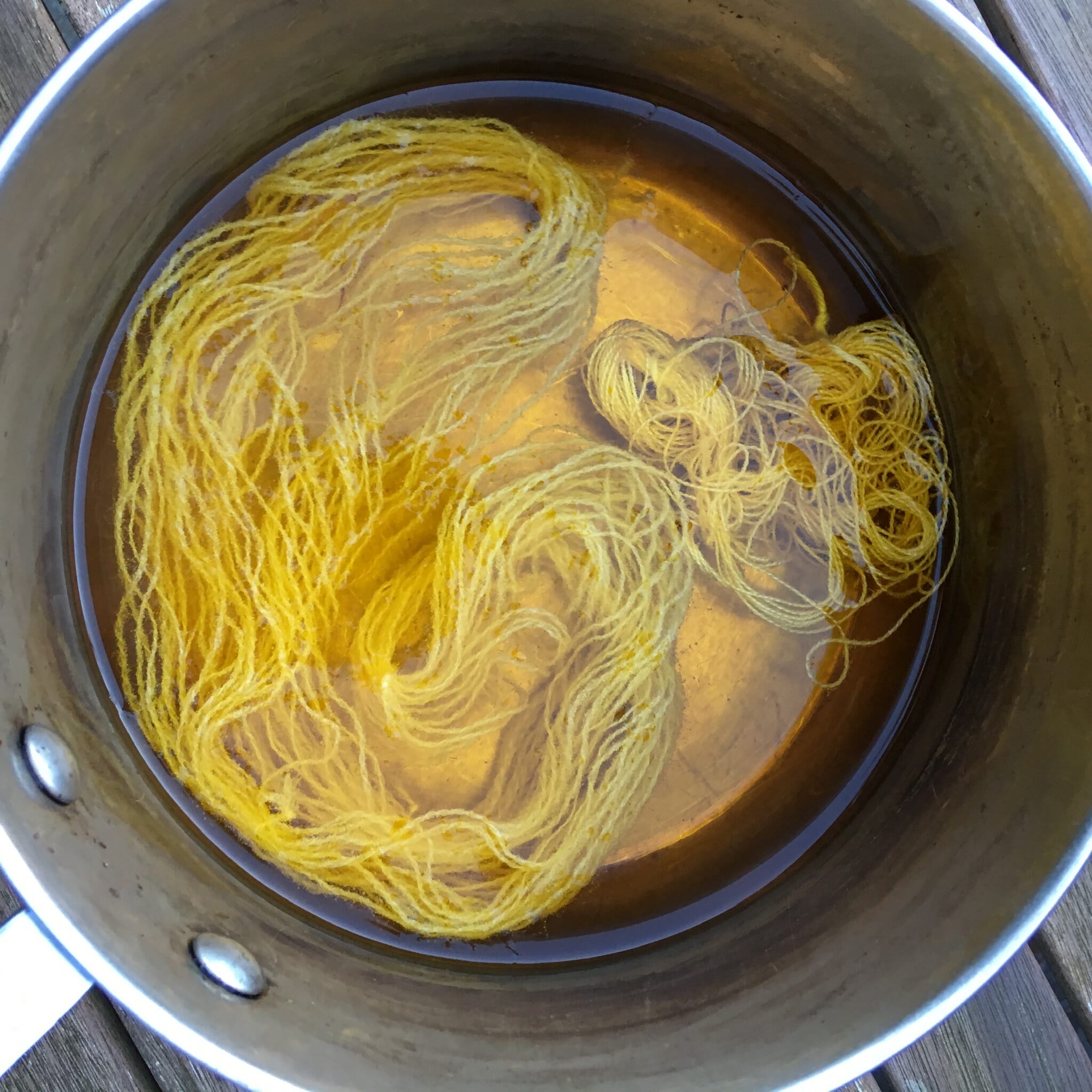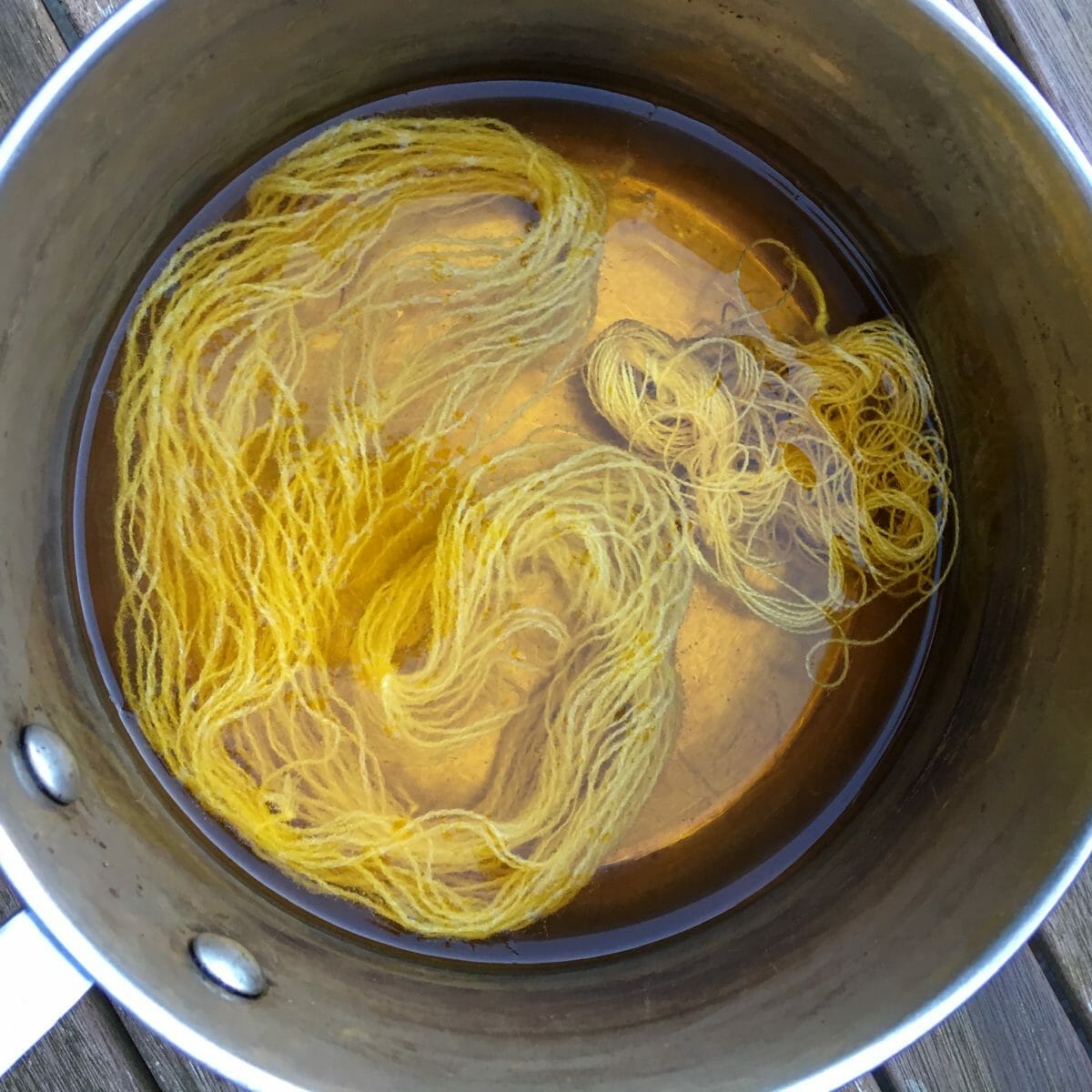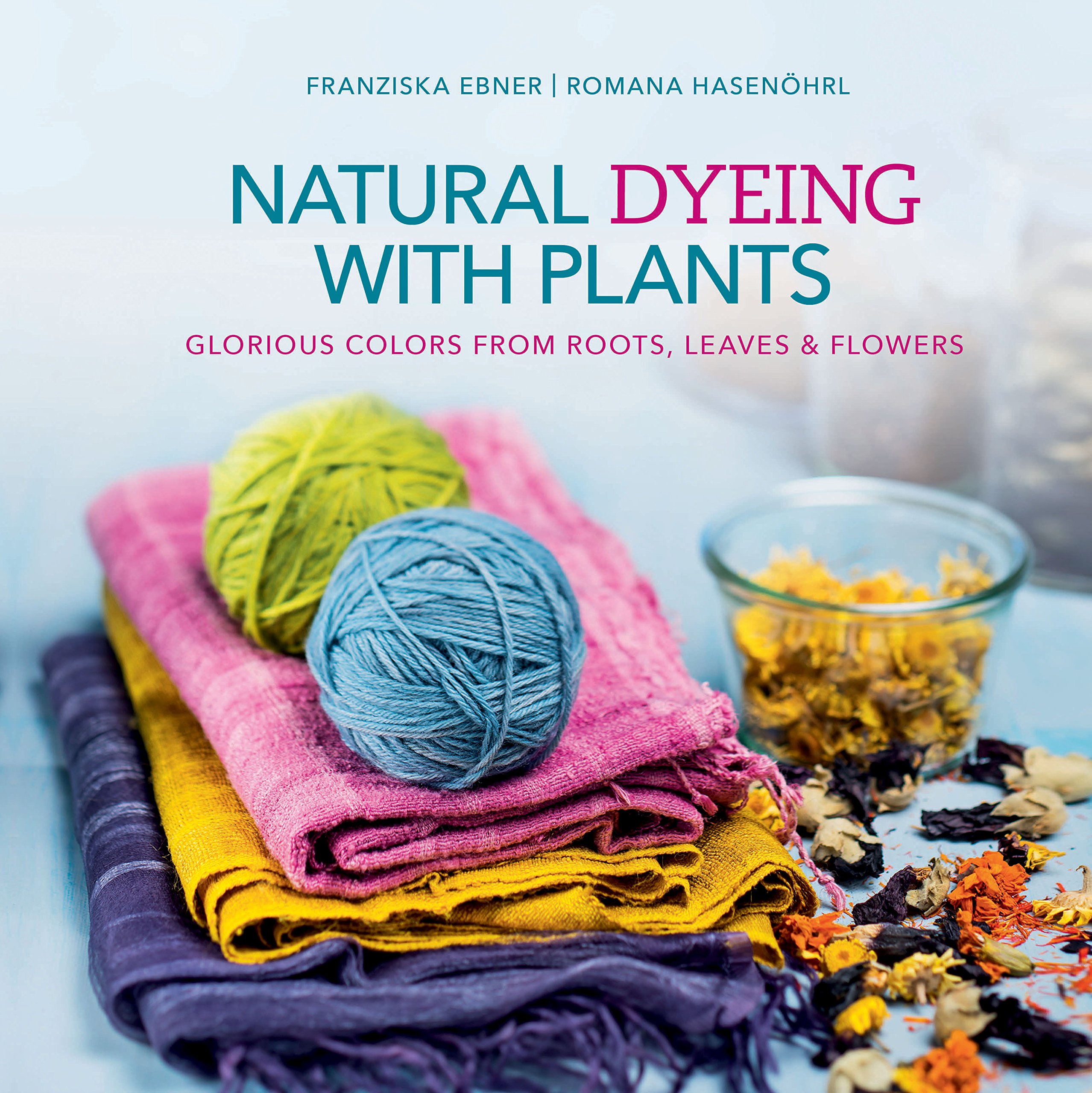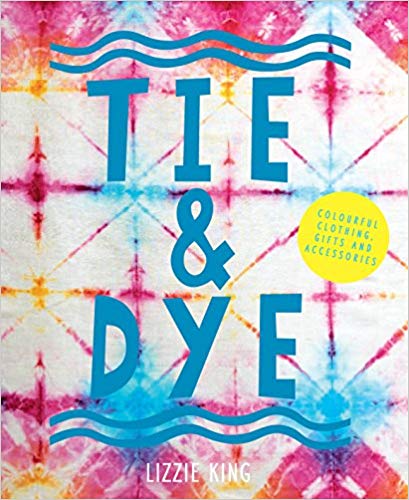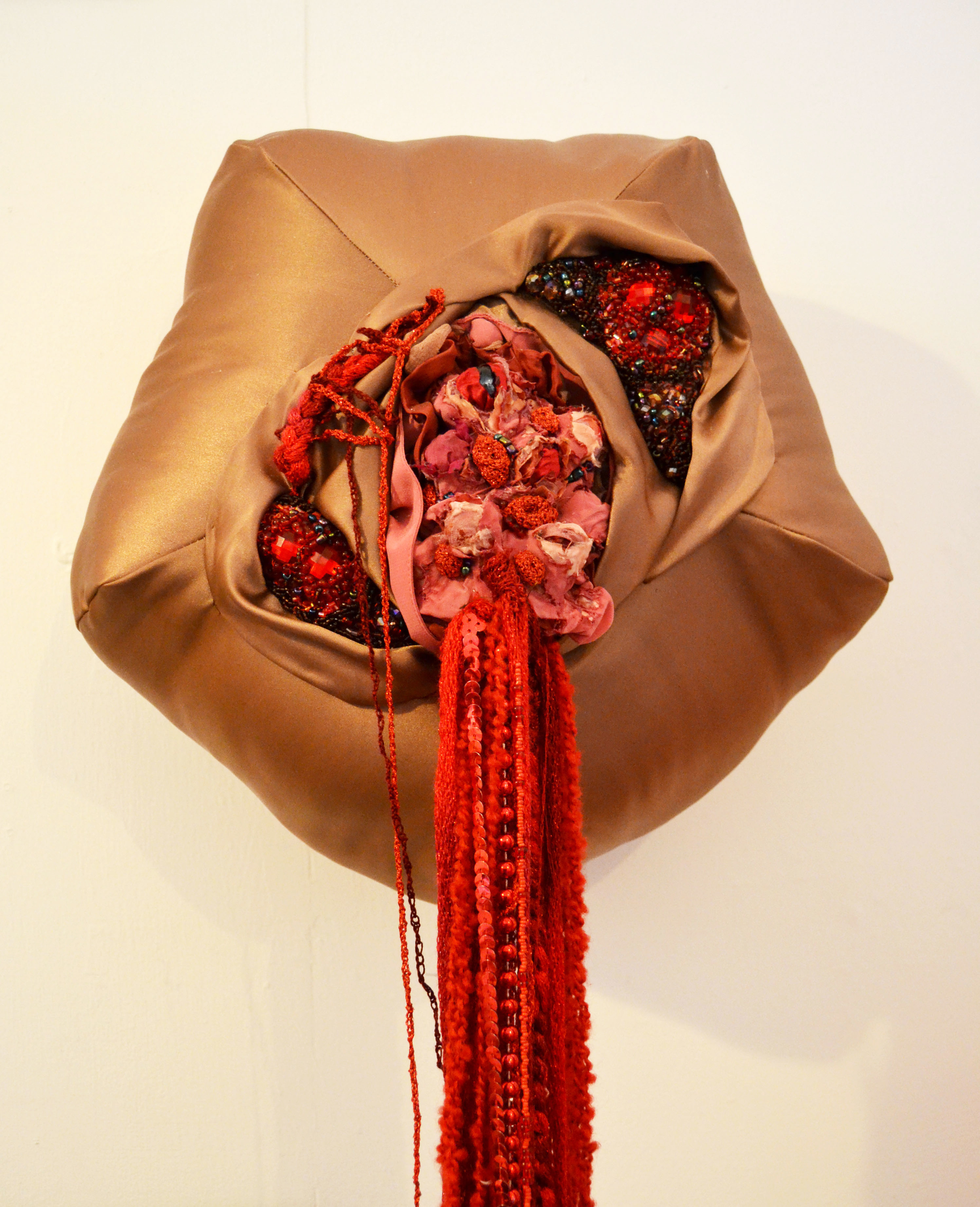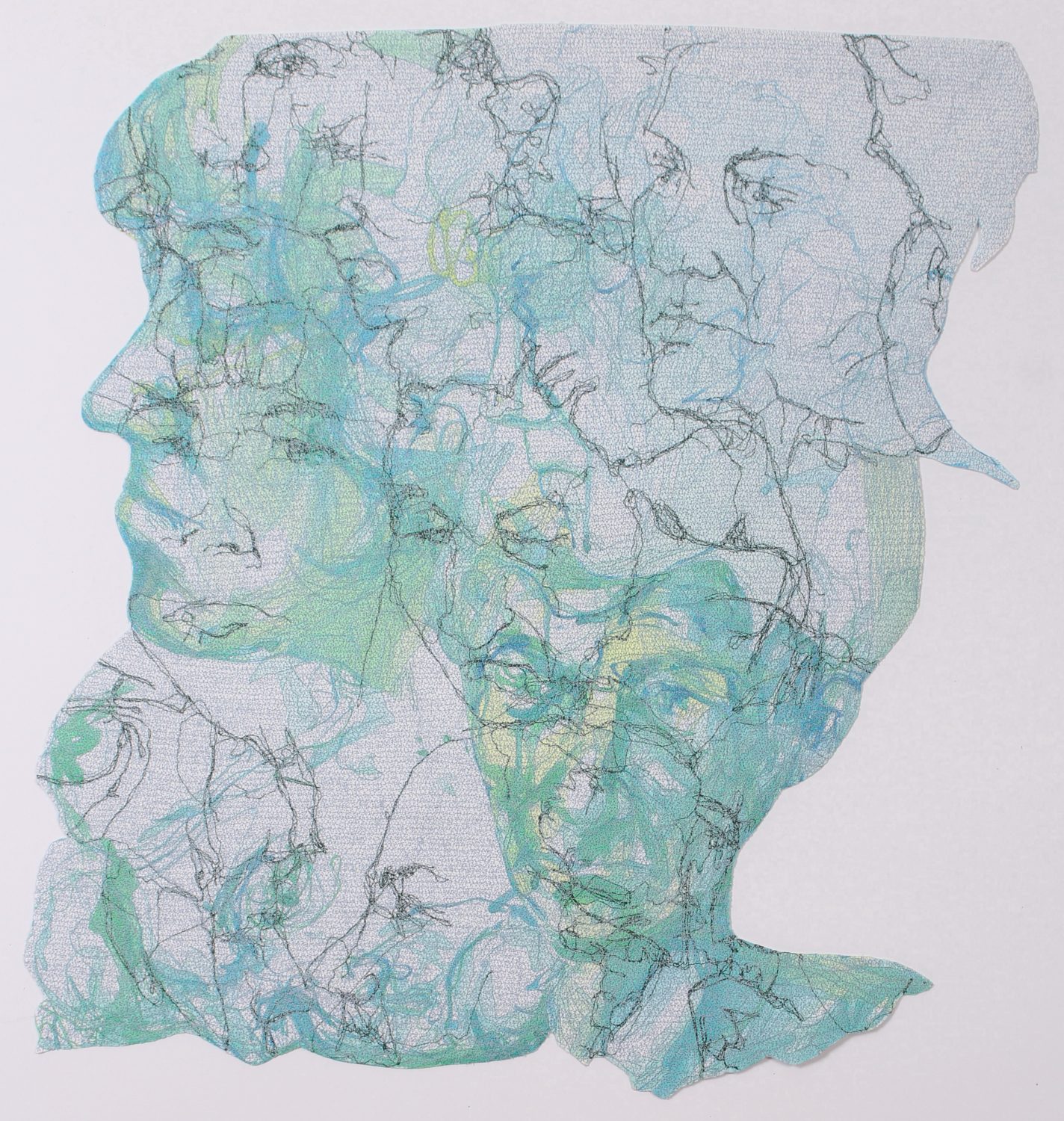
Welcome to Living for Dyeing where we explore tips and techniques for colouring your textiles!
I usually like to use natural materials for dyeing; I like the whole foraging process and the subtlety of colours you get. But recently I thought I would have a go at dyeing with food colouring to see if it was as effective as using plant dyes.
The good thing about using food colouring to dye fabric is that you can use the same pots and pans you use for cooking, and its relatively simple and cheap to source. I did find some VERY old food colouring in my sister-in-law’s cupboard (we’re talking decades here) but the ones I used are Wilton’s food colouring gel. You can get them from craft and baking supply shops and from Amazon (or try your sister-in-law’s cupboard).
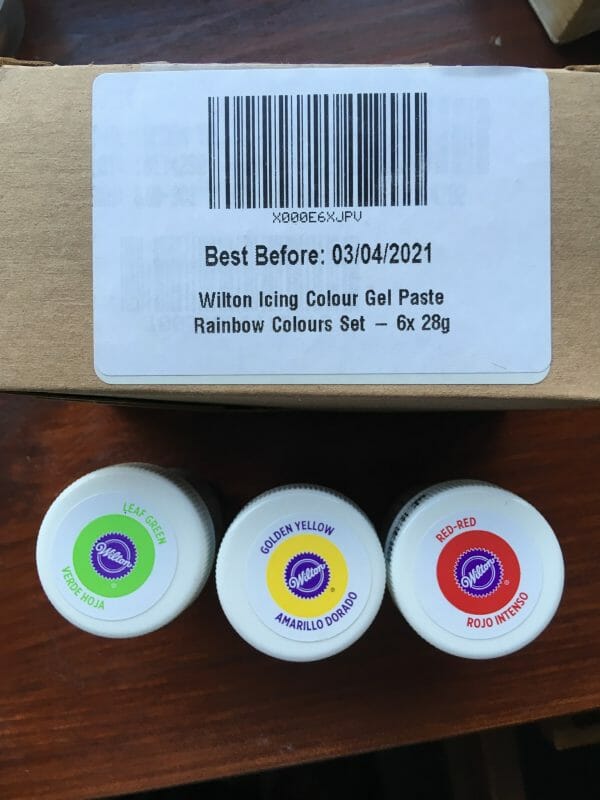
To dye fabric with food colouring you will need:
- food colours
- clear vinegar (this stops the colour washing out)
- rubber gloves (unless you want to look like you’ve got a twenty a day habit)
- yarn or fabric
- pots and pans
- a source of heat (the heat is what fixes the colour)
When I did this experiment it was close to Christmas, so I decided to use seasonal colours and went with red, yellow (gold) and green. You can only use this method for animal fibres like wool and silk (wool works best). You can get more detailed instructions on this process at Instructables (using a microwave as the heat source) but this is the basic method I used and it worked for me.
How to dye fabric with food colouring
Step 1: Soak the yarn or fabric for a few hours in a solution of water and clear vinegar. A rough guide is a quarter cup (60ml) of vinegar for each 100g of yarn or fabric. But as I was dyeing very small amounts I just added a few good squirts to the water.
Step 2: Mix the dye in a cup of hot water. You only need a small amount. I used a cocktail stick to get the colour out and to mix it. Make sure its fully dissolved.
Step 3: Add the dye to a pan of water. Add a few more squirts of clear vinegar and mix well.
Step 4: Add the yarn or fabric to the pan making sure it’s all submerged then heat it slowly to simmering.
Step 5: Let it simmer for about 20 minutes or until it’s the colour you want.
Step 6: Remove the wool or yarn from the dye and let it cool (be patient, this is important, especially for wool).
Step 7: Rinse well and you’re done!
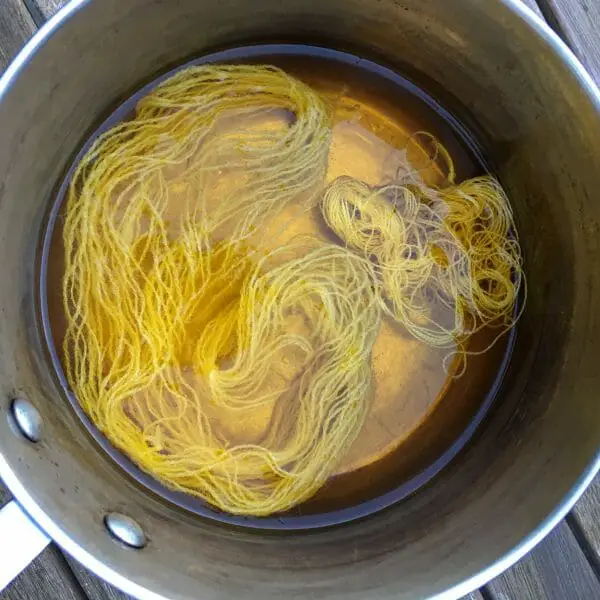
I dyed pre-felted wool green and wool and silk yarns red and gold. As I expected, the wool took up the dye much better than the silk. I had to leave the silk in the dye solution for a lot longer and added more colour and vinegar to get the colour I wanted. When I’d finished, I made a Christmas card with the help of a few small washers.
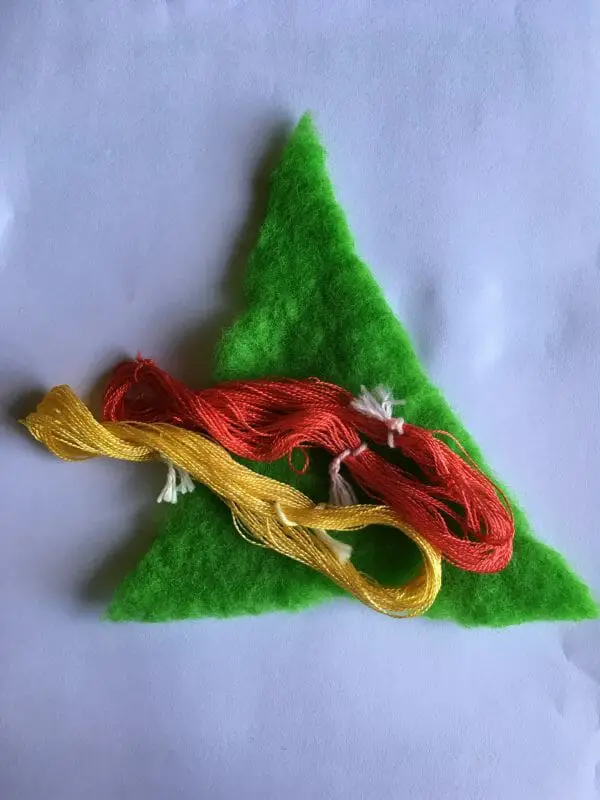
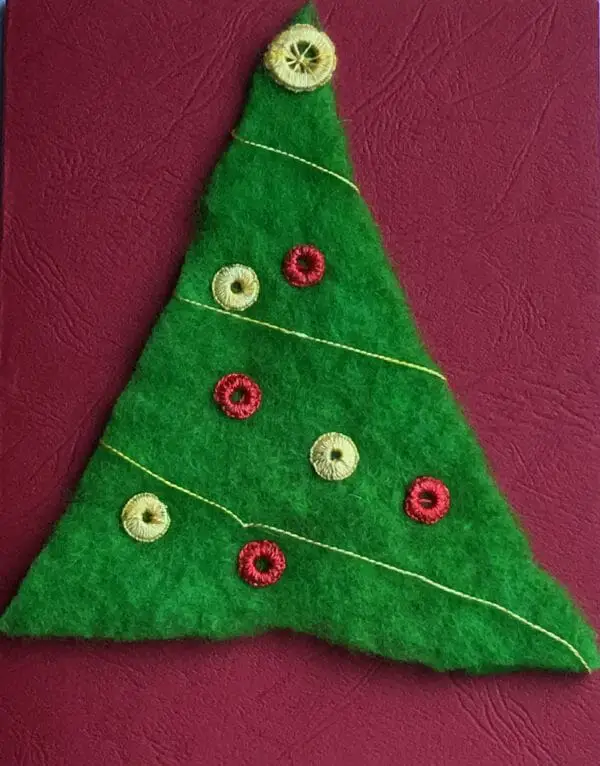
The colours are OK for a Christmas card but they are a bit bright and ‘flat’.
Space Dyeing With Food Colouring
I think where dyeing with food colouring really comes into its own is space-dyeing. It’s something you can’t really do with natural dyes, or at least it’s more difficult.
You can space dye fabrics in a microwave but I prefer to do it in a vegetable steamer.
Step 1: Soak the yarn or fabric for a few hours in a solution of water and clear vinegar.
Step 2: Squeeze out the liquid from the yarn.
Step 3: Lay the yarn onto a plastic sheet or similar non porous surface.
Step 4: Apply the dye directly onto the yarn using a cocktail stick. You need to be aware that some of the colours will mix, so if you put yellow next to blue you’ll also get green.
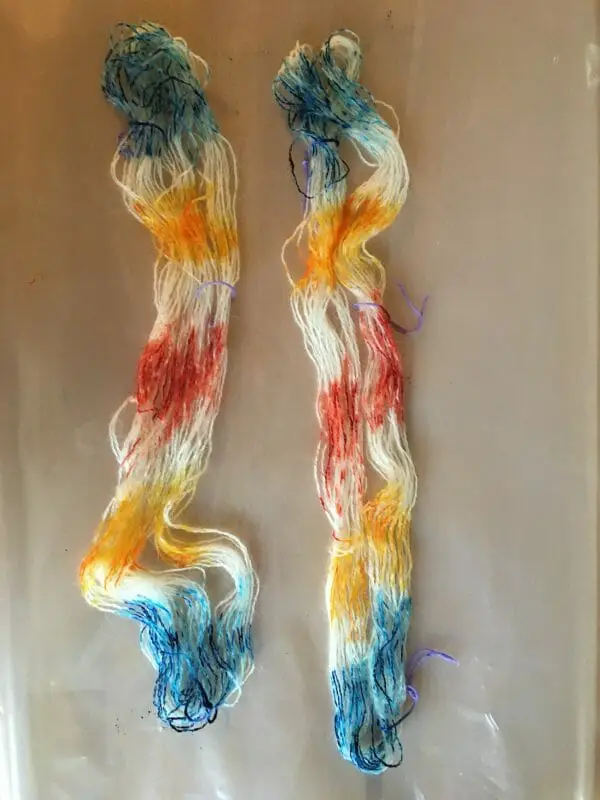
Step 5: Pop it into a steamer and steam for about 20 minutes. If you move it around a bit the colours are more likely to merge.
Step 6: Remove the wool or yarn from the dye and let it cool. This is a great excuse to use more food colouring on a batch of cupcakes while you are waiting!
Step 7: Rinse well and you’re done!
The colours are very bright but can be calmed down by putting them with something more neutral. You’ll find, with practice, how the colours respond and how much food colouring you need for specific shades.
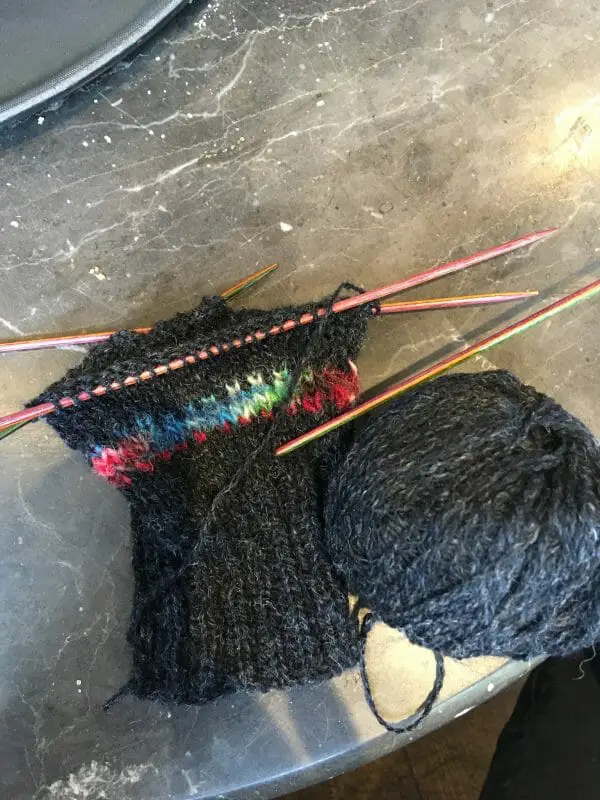
In Conclusion
Dyeing fabric with food colouring is a relatively easy process and a simple way to try dyeing for beginners. It is particularly useful if you only want to apply dye to part of a fabric, and because it uses familiar household objects, it’s quite cost effective as well. Try it, you might like it!
Related Questions:
How long does food colouring last on clothes?
Food colouring will remain in your dyed clothes for years, as the process of using vinegar and heat to lock the colour will prevent it from coming out in the wash. However, as with any home dying processes, you can expect some discolouration over time and washing.
Will food colouring dye all materials?
Food colouring works best on fabrics with protein fibres, like wool, silk and cashmere. Fabrics like cotton and linen are cellulose and these are affected by the acidic qualities of food colouring. If you want to do dye fabrics like cotton, you are best to use fibre reactive dyes, like those found in dying kits at your local supermarket.

